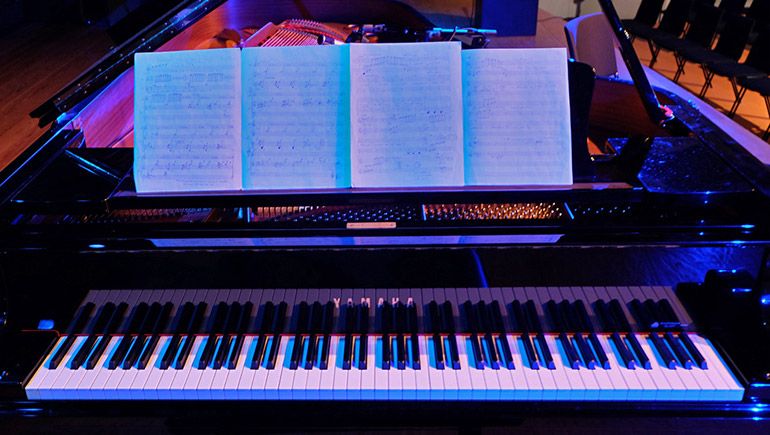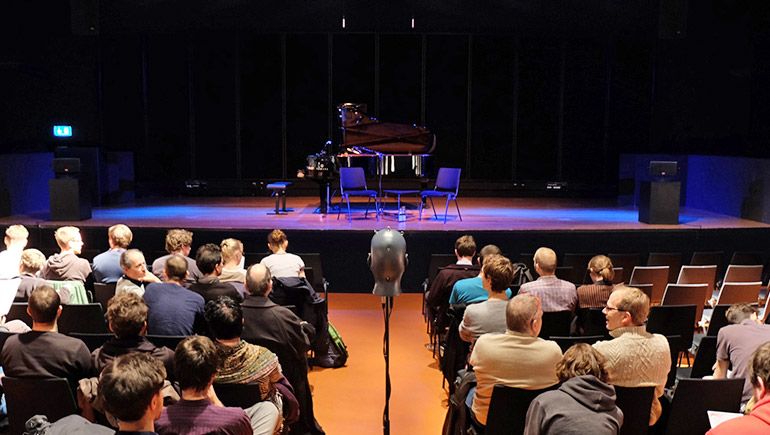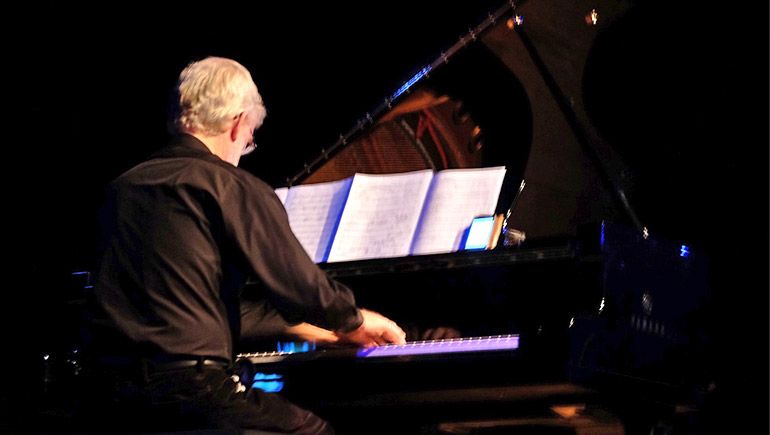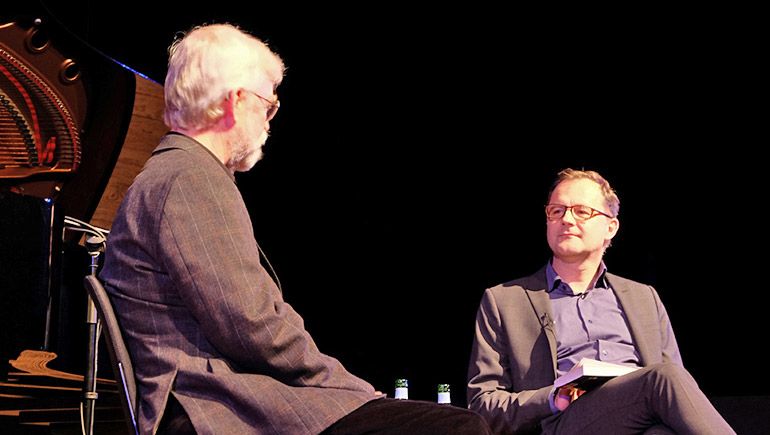Delicate digital chirping fills the Georg Neumann Hall of the UdK Berlin. Only vaguely rhythmic structures are perceptible, they seem to get lost in the process of observation.
Then suddenly hollow tones emerge, sparkling and clear. A crystalline desert of sound. Like glass it is shattered and the audience observes with closed eyes and open ears as the broken pieces are rearranged. The tiny grains slowly condensate to a sonorous river, the virtual dissonant chaos finds its resolution in steady, darkly colored noise. Minutes later this noisy, distant storm subsides and the grains accumulate to more distinct structures, which turn out to be evanescent as well. They melt down slowly into high frequency whisper. Now and then the glazed shapes break out and try to make their way to the surface, but get lost in the acoustic space. Somewhere in all this turbulence I ask myself: What do computers hear?
A plausible answer might lie in granular synthesis, which is one basic principle of the work of Barry Truax. Granular synthesis deals with sound as a succession of small particles, so called “grains”. These are digitally isolated and rearranged to whole new textures. Thus, granular synthesis is a way to deconstruct sound. It is destructed, taken apart into its smallest components and then these are used to construct something entirely new.
Truax is a Professor Emeritus in the School of Communication at Simon Fraser University in Vancouver, Canada and currently the Edgard Varèse Guest Professor at the TU Berlin. His work oscillates between art and research, marking technology as a fixing point. As a teacher he has been giving courses in acoustic communication and electroacoustic music, as a writer, editor and publisher he is responsible for several important contributions in his field, and as a composer his multi-channel soundscape compositions are frequently featured in concerts and festivals around the world.
Truax presented four of his octophonic electroacoustic and soundscape compositions at the first Hybrid Event, our new format that intends to present topics between the poles of science and art in an innovative, hybrid form to an interested public. The first piece of the evening was titled Riverrun from 1986, described above. It was followed by The Shaman Ascending from 2005, a digital translation of the chant of a traditional shaman figure striving for spiritual ecstasy. In the third piece of the evening, From the Unseen World, Traux swapped his former instrument, the mixing console, with the piano and wove soft appregios into digital soundscapes.
Afterwards Stefan Weinzierl, head of the Audio Communication Group of the TU Berlin and leader of the Hybrid Plattform, talked with Truax about his basic ideas and principles concerning his music and the experiences he gathered during his versatile career. Truax understands the concept of soundscape as a driving force of his work. Soundscape describes auditive envelopes, that surround a hearing person in certain locations, for example the nervous background noise in a large city. Since its origin in the late 1970ies, it opened a new perspective on sound as a cultural phenomenon with varied ambivalent dimensions, including social, political and artistic aspects. In particular, technological progress is a main topic as well as a condition of soundscape. The sound emitted by a technologically determined society has consequences on an individual level. The idea of an acoustic ecology leads straight to the question: which sounds are and how much volume is good for one‘s well-being? Sound involves the listener in a physical but unconscious and thus very personal way and by influencing the individual person, it again shapes societies on a social and cultural level. Truax‘ work considers these ideas and carries them on into artistic expression. His digitally rendered soundscape mimics the real world in an abstract way, creating imaginary or even mythical acoustic spaces.
Talking about the relationship between art and research, Truax stresses the relevance of technology developed by science for the expression of artistic ideas. His work benefits from this widespread interdisciplinary approach. In a modern world filled with possibilities, he outlines that interdisciplinarity is a premise. Being a fundamental component of numerous academic disciplines and artistic expression, sound can serve as a medium to make these connections.
The first Hybrid Presentation came to a close by the piece Earth and Steel, a soundscape describing the production of large steel ships the way they were done one century ago, in enclosed slips. Rich metallic resonances reflect the discrepancy between the sheer volume of the ships and the size of those who were building them. They remind us of an acoustic past, a soundscape that is long gone and thus has to be re-imagined.
– Marten
Did you miss the event? Listen to the interview and two pieces here.




